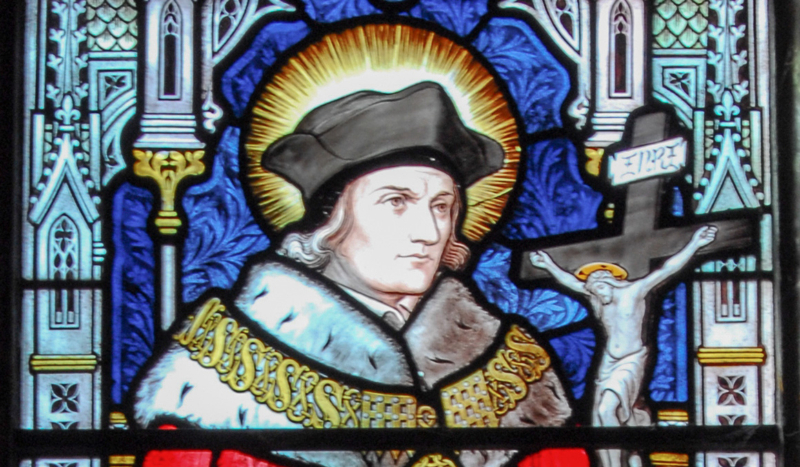
Stained Glass image of St. Thomas More, Belmont Abbey / Adobe Stock
Nearly five centuries after King Henry VIII had it parboiled and mounted on a pike, the head of Catholic martyr and statesman Saint Thomas More may soon be exhumed for preservation and display.
Church officials at St. Dunstan’s in Canterbury, an Anglican church, have confirmed they are moving forward with formal requests to recover what is believed to be the saint’s head from the Roper family vault beneath the church, the U.S. Sun reported.
If approved, the relic would undergo extensive conservation and could be installed in a public shrine by 2035 — the 500th anniversary of St. Thomas More’s execution.
St. Thomas More served as Lord Chancellor under Henry VIII but lost favor after refusing to support the King’s break from the Catholic Church. His principled resistance to royal authority cost him his life, in 1535.
According to historical accounts, his head was displayed on London Bridge before being secretly rescued by his daughter, Margaret Roper. She is said to have preserved it and eventually had it buried with her.
By 1578, both her remains and the head had been transferred to the Roper family vault at St. Dunstan’s, where they have remained undisturbed for centuries. Now, parish leaders are exploring how best to honor the relic’s historical and spiritual significance.
A statement read to parishioners July 6 indicated that the parish council supports the exhumation, contingent on required approvals. The Times reported that the council needs permission from the Church of England’s commissary court, which makes decisions regarding church buildings and grounds and typically avoids exhuming remains.
“What the [parish council] has agreed, subject to all the right permissions being granted, is to exhume and conserve what remains of the relic, which will take several years to dry out and stabilise,” the statement read.
The parish is considering placing the conserved relic either back in the vault or in a visible reliquary — potentially within a carved stone shrine inside the Roper Chapel. Community members are being invited to share their thoughts, as many visitors have long expressed a desire to view the relic.
The effort would require approximately £50,000 in donations to fund professional archaeological and conservation work. Initial feedback from parishioners has been positive, according to the U.S. Sun, and organizers are hopeful that support will grow as plans develop.

